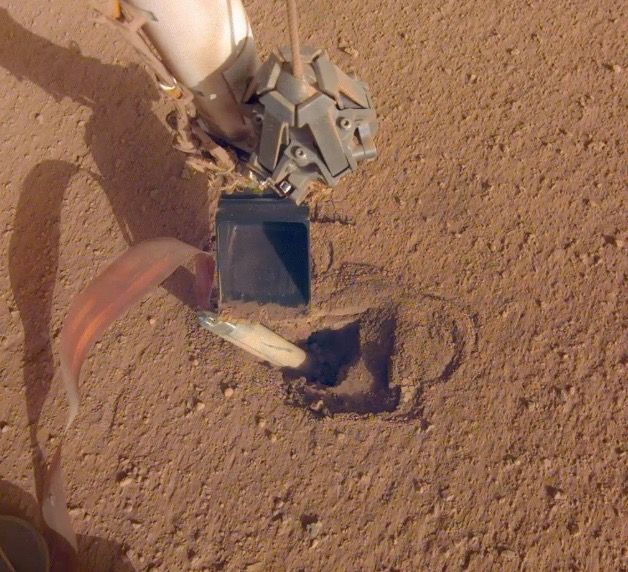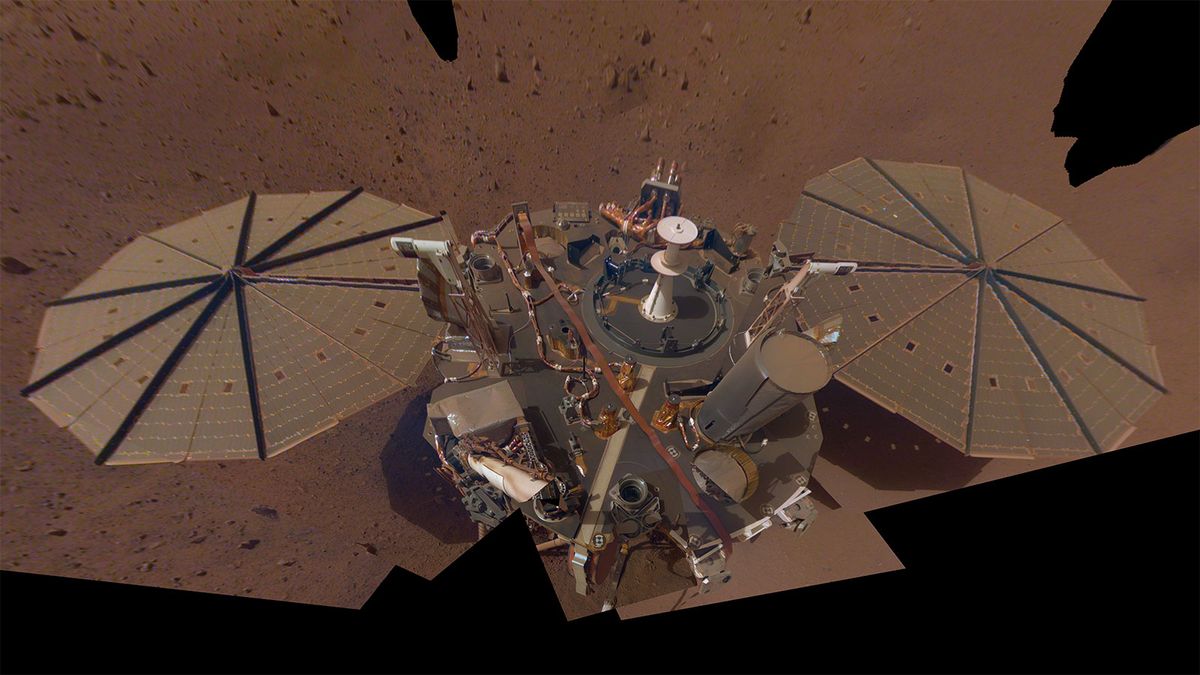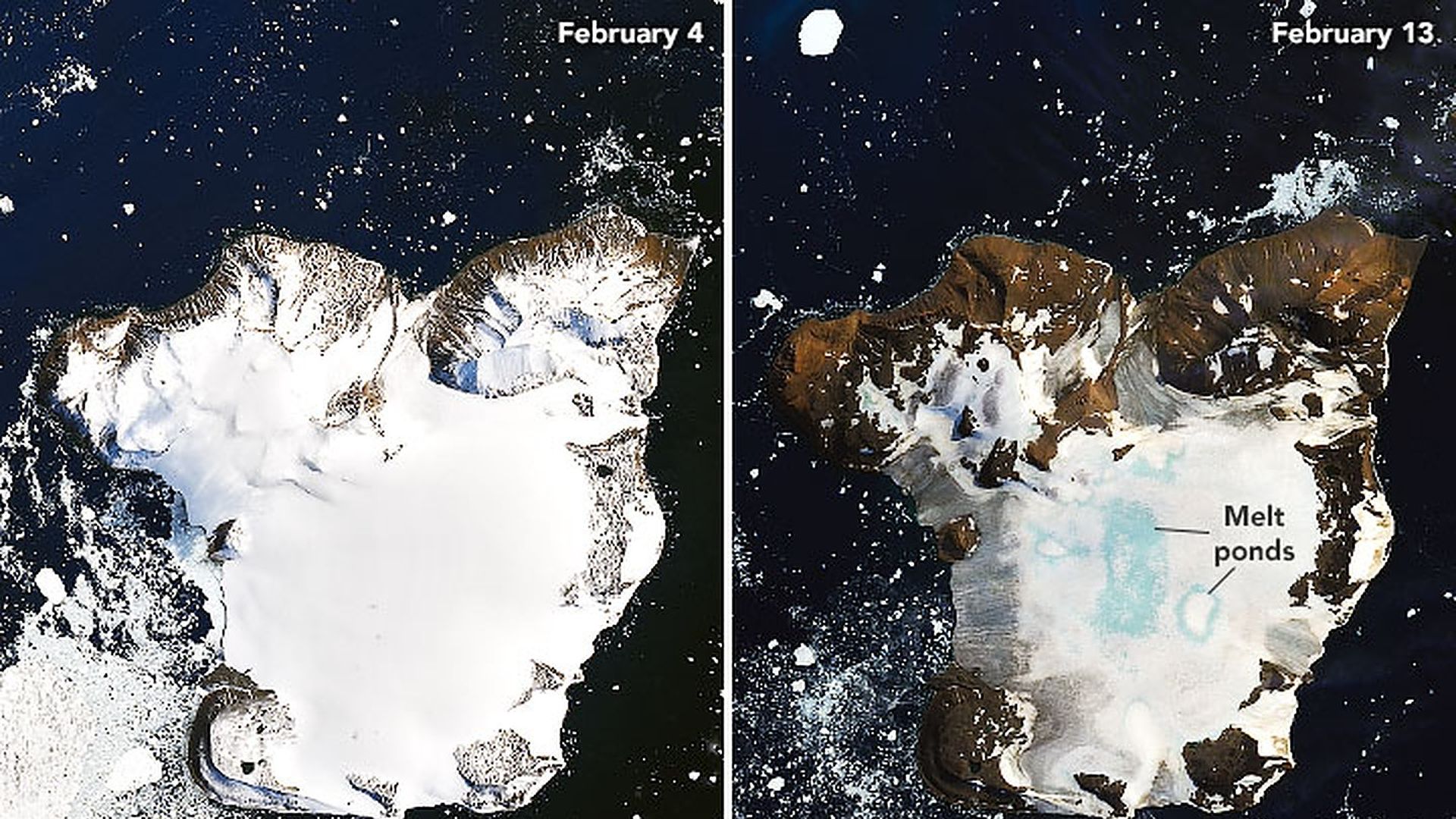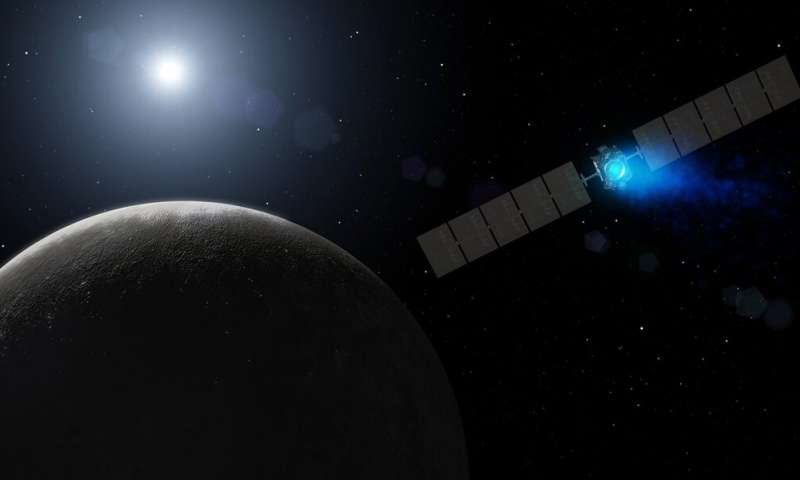Mars may be cold and dry, but it's far from dead.
The first official science results from NASA's quake-hunting InSight Mars lander just came out, and they reveal a regularly roiled world.
"We've finally, for the first time, established that Mars is a seismically active planet," InSight principal investigator Bruce Banerdt, of NASA's Jet Propulsion Laboratory (JPL) in Pasadena, California, said during a teleconference with reporters Thursday (Feb. 20).
Related: Mars InSight in photos: NASA's mission to probe Martian core
Martian seismicity falls between that of the moon and that of Earth, Banerdt added.
"In fact, it's probably close to the kind of seismic activity you would expect to find away from the [tectonic] plate boundaries on Earth and away from highly deformed areas," he said.
Probing the Martian subsurface
InSight touched down near the Martian equator in November 2018, kicking off a two-year, $850 million mission to probe the Red Planet's interior in unprecedented detail.
The stationary lander carries two main science instruments to do this work: a supersensitive suite of seismometers and a burrowing heat probe dubbed "the mole," which is designed to get at least 10 feet (3 meters) below the Red Planet's surface.
Analyses of marsquake and heat-transport measurements will allow the mission team to construct a detailed, 3D map of the Martian interior, NASA officials have said. In addition, InSight scientists are using radio signals beamed from the lander to track how much Mars wobbles on its axis over time. This information will help researchers determine how big and dense the planet's core is. (The mission's full name — Interior Exploration using Seismic Investigations, Geodesy and Heat Transport — references these various lines of investigation.)
Overall, InSight's observations will help scientists better understand how rocky planets such as Mars, Earth and Venus form and evolve, mission team members have said.
The mission's initial science returns, which were published today (Feb. 21) in six papers in the journals Nature Geoscience and Nature Communications, show that InSight is on track to meet that long-term goal, Banerdt said. (We have gotten a taste of these results over the past year or so, however, as mission team members have released some findings in dribs and drabs.)
Related: NASA's Mars InSight lander: 10 surprising facts
Lots of quakes
The new studies cover the first 10 months of InSight's tenure on Mars, during which the lander detected 174 seismic events.
These quakes came in two flavors. One hundred and fifty of them were shallow, small-magnitude tremors whose vibrations propagated through the Martian crust. The other 24 were a bit stronger and deeper, with origins at various locales in the mantle, InSight team members said. (But even those bigger quakes weren't that powerful; they landed in the magnitude 3 to 4 range. Here on Earth, quakes generally must be at least magnitude 5.5 to damage buildings.)
That was the tremor tally through September 2019. InSight has been busy since then as well; its total quake count now stands at about 450, Banerdt said. And all of this shaking does indeed originate from Mars itself, he added; as far as the team can tell, none of the vibrations were caused by meteorites hitting the Red Planet. So, there's a lot going on beneath the planet's surface.
But that activity is quite different from what we're used to on Earth, where most quakes are caused by tectonic plates sliding against, over or under each other. Mars doesn't have active plate tectonics, the researchers said, so both types of quakes are caused by the long-term cooling of the planet since its formation 4.5 billion years ago.
"As the planet cools, it contracts, and then the brittle outer layers then have to fracture in order to sort of maintain themselves on the surface," Banerdt said. "That's kind of the long-term source of stresses."
And some Martian locales are more stressed than others. One particularly active region is the Cerberus Fossae fracture system, which lies about 1,000 miles (1,600 kilometers) east of InSight's Elysium Planitia landing site.
The mission team traced two of the largest detected marsquakes to Cerberus Fossae, which "contains faults, volcanic flows and liquid water outflow channels with ages as recent as 2-10 Ma [million years ago], and possibly younger from impact crater counts," Banerdt and his colleagues wrote in one of the new studies.
"So, it's possible that there's actual magma at depth that's cooling," InSight deputy principal investigator Sue Smrekar, also of JPL, said during Thursday's teleconference. That cooling would lead to the contraction of the magma chamber, causing deformation of the crust, she added.
But Smrekar stressed that this is a hypothesis, not a definitive determination of what's going on at Cerberus Fossae. Indeed, though mission team members think they understand Martian seismicity in broad strokes, they're still trying to nail down how it works in detail.
Related: 7 biggest mysteries of Mars
Many insights
A wealth of information can be gleaned from InSight's quake measurements. For example, analyses of how the seismic waves move through the Martian crust suggest there are small amounts of water mixed in with the rock, mission team members said.
"Our data is consistent with a crust which has some moisture in it, but we can't say one way or the other whether there [are] large underground reservoirs of water at this point," Banerdt said.
The new papers report a variety of other discoveries as well. For example, InSight is the first mission ever to tote a magnetometer to the Martian surface, and that instrument detected a local magnetic field about 10 times stronger than would be expected based on orbital measurements. (Mars lost its global magnetic field billions of years ago, however. This allowed solar particles to strip away the once-thick Martian atmosphere, which spurred the planet's transition from a relatively warm and wet world to the cold desert it is today.)
InSight is also taking a wealth of weather data, measuring pressure many times per second and temperature once every few seconds, Banerdt said. This information helps the mission team better understand environmental noise that could complicate interpretations of the seismic observations, but it also has considerable stand-alone value.
"This is really going to, I think, revolutionize our understanding of the interaction of the atmosphere with the surface of Mars," Banerdt said. "That's one of the things that's really going to open up a whole new window of research on Mars."
Mole update
Not everything has gone smoothly for InSight, however. Notably, the mole has been unable to get down to its prescribed depth because the Martian dirt is proving more slippery than mission team members had anticipated. (The mole's self-hammering burrowing system requires a certain amount of friction to work.)
The mission team has tried several strategies to get the mole moving, including pressing on the side of the probe with InSight's robotic arm to generate the required friction. This latter tactic has generated some halting success, but the mole remains stranded too close to the surface.
So, in the next six to eight weeks, mission team members aim to try a modification of the arm-pressing strategy, in which they'll push on the mole's back rather than its side. The goal is to get the mole about 16 inches (40 centimeters) down, at which point it will hopefully be able to start digging on its own, Banerdt said.
The InSight team would also like a bit more cooperation from Mars on the seismic side of things, if possible. The lander has not yet spotted any truly big quakes, which have the potential to paint a clearer picture of the planet's deep interior for mission scientists.
The lack of powerful quakes is no surprise, Banerdt stressed; big tremors are much rarer than their smaller counterparts here on Earth, after all. So, the team may have to wait a while to get one.
But such issues aren't derailing the mission; the team is excited about how things have gone thus far, Banerdt said.
"I think we're well on our way to getting most, if not all, of the goals that we set for ourselves 10 years ago when we started this mission," he said.
Mike Wall is the author of "Out There" (Grand Central Publishing, 2018; illustrated by Karl Tate), a book about the search for alien life. Follow him on Twitter @michaeldwall. Follow us on Twitter @Spacedotcom or Facebook.
Let's block ads! (Why?)
https://news.google.com/__i/rss/rd/articles/CBMiRmh0dHBzOi8vd3d3LnNwYWNlLmNvbS9uYXNhLWluc2lnaHQtbGFuZGVyLW1hcnMtc2Vpc21pY2FsbHktYWN0aXZlLmh0bWzSAUpodHRwczovL3d3dy5zcGFjZS5jb20vYW1wL25hc2EtaW5zaWdodC1sYW5kZXItbWFycy1zZWlzbWljYWxseS1hY3RpdmUuaHRtbA?oc=5
2020-02-24 16:04:00Z
52780628255192


 “Aerobic respiration was thought to be ubiquitous in animals, but now we confirmed that this is not the case,” Huchon explains. “Our discovery shows that evolution can go in strange directions. Aerobic respiration is a major source of energy, and yet we found an animal that gave up this critical pathway.”Fungi, amoebas or ciliate lineages living in oxygen-poor environments abandoned the need to consume fresh air quite some time ago, after their evolutionary trajectories followed an anaerobic path. The findings allude to the possibility that the same type of occurrence could happen to an animal if the conditions are right."Its genome was sequenced, along with those of other myxozoan fish parasites," TAU said in a statement. Before the discovery, experts were unsure whether organisms within the animal kingdom could survive without oxygen, given that animals are "multicellular, highly developed organisms, which first appeared on Earth when oxygen levels rose." The findings are important for future
“Aerobic respiration was thought to be ubiquitous in animals, but now we confirmed that this is not the case,” Huchon explains. “Our discovery shows that evolution can go in strange directions. Aerobic respiration is a major source of energy, and yet we found an animal that gave up this critical pathway.”Fungi, amoebas or ciliate lineages living in oxygen-poor environments abandoned the need to consume fresh air quite some time ago, after their evolutionary trajectories followed an anaerobic path. The findings allude to the possibility that the same type of occurrence could happen to an animal if the conditions are right."Its genome was sequenced, along with those of other myxozoan fish parasites," TAU said in a statement. Before the discovery, experts were unsure whether organisms within the animal kingdom could survive without oxygen, given that animals are "multicellular, highly developed organisms, which first appeared on Earth when oxygen levels rose." The findings are important for future 











